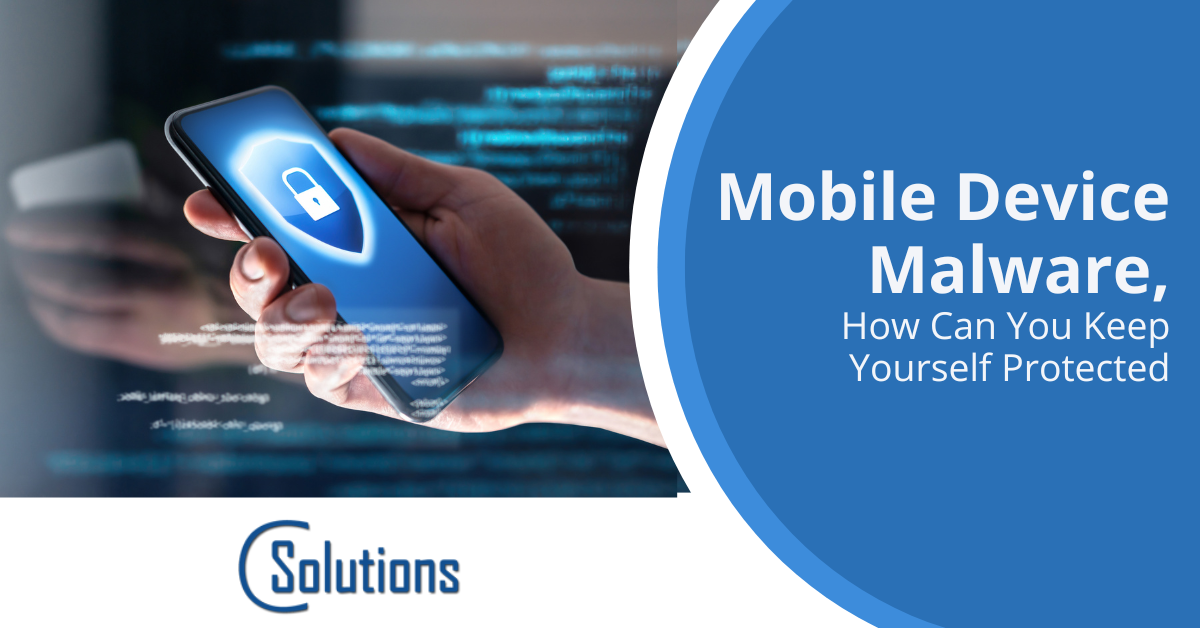Mobile Device Malware, How Can You Keep Yourself Protected

Are you aware that the number of dangers your phone faces increases per annum? Just between 2016 and 2017, novel mobile malware varieties increased by 54%.
These hacks are not occurring in a vacuum. Mobile malware is the new battleground for cybercriminals, and here’s why. According to Pew Research Center, 85% of Americans have their own smartphone, and about 20% of those users peruse the internet on their phones rather than a computer. These figures aren’t dropping anytime soon, which means that more individuals will use their phones to access the internet, and hackers will have a larger pool to work with.
Mobile Malware Is the Next Online Threat
Mobile malware has exploded in the previous several years. And hackers are responding well. Many apps are on mobile app stores waiting to be downloaded. Many of these apps range from backdoor spyware that collects personal information to ransomware that locks your phone until you pay. With millions of these apps out there, you must be careful and alert.
In addition to a growth in the number of individuals using their phones as their primary way of accessing the internet, there is also an increase in the use of mobile devices for storing and transferring sensitive data. According to another Pew Research Center Report, 57% of smartphone users use their phones to run online transactions.
However, internet banking is just one of numerous ways to hack smartphones. Phones hold and transfer more sensitive information than your laptop, yet it is not necessarily as secure. Some apps use the GPS feature to monitor your location. Others frequently ask you to provide them access to data saved on your phone or cloud. With the large amount of personal information stored in phones – from vacation photos to fitness data and food likes and dislikes, it is not a surprise that cybercriminals are deciding to attack phones with malware, putting social engineering tactics on the back burner. Phones are practically goldmines of information these days.
Hence, knowing how to prevent the intrusion of phone malware cannot be underemphasized.
What Does Malware on A Mobile Device Look Like?
How can you know if your smartphone has malware? If you experience any of these signs on your phone, then you might need professional mobile malware removal services:
Annoying Pop-Ups
If you open an app and you’re suddenly beset with a lot of adverts, then your phone is infected. Sometimes this happens when no apps are open. These pop-ups, which can be highly infuriating at times, can be used to earn revenue from ad clicks, attempt to infect you with further malicious spyware, or lead to fraudulent offers.
Your Battery Drains Faster Than Normal
While batteries typically deteriorate uniformly over time, a drastic change in battery life is suspicious and should be monitored closely. Malware conducts background operations on your phone, causing the battery to drain quicker than usual.
Your Phone Keeps Getting Slower
Your smartphone, like a PC, operates on processors to do specific computational functions. If your smartphone has malware, it can get overworked because of the other operations running in the background, making ordinary operations take longer than they should. Malware might be at blame if your phone experiences sudden slowdowns or even crashes intermittently.
Strange Apps Appear
A malware app can install other apps without your permission. Constantly check your app list for apps you do not recognize. Examine your app list to ensure you recognize and want everything on your phone. If you find any, try to uninstall or place them where you would never open them.
How To Protect Yourself Against Mobile Phone Malware
How do you ensure your phone is safe in times like this? Here are some steps to take:
Avoid third-party apps
While this is easier if you’re using an iPhone, Android users selecting the “not enabling apps from unknown sources” and downloading apps with good reviews on Google Play keep Android phones safe. However, if you decide to utilize third-party applications, do your homework before downloading and installing them. Read the reviews; if the app has too many access permissions, do not download it.
Be wary of public Wi-Fi.
Investing in internet equipment such as mobile hotspots and routers to use when traveling can help ensure your phone is not infected with malware. Cell phone users should be aware of the public wireless internet they are about to connect to when they are out in public. If the Wi-Fi is not safe, it may be wise to avoid connecting until you are in a more reliable internet place.
You are also advised to turn off your Wi-Fi and Bluetooth when not in use to safeguard your device from malware accessing your information over public Wi-Fi. It is also critical to be wary of public charging stations, as they may be infected with malicious software.
Install Protection Malware
Just as PCs have virus protection software, mobile phones have that too. There is a growing but backed-up sentiment that with the increase in mobile phone hacking and malware, there will be a corresponding increase in cellular malware protection. This is still an evolving area and research on the best/most useful products change from year to year. Most of the solutions out there provide various application locking, anti-theft services and call blocking services which while are security related are not the typical things that come to mind with “protecting against malware”.
Having Mobile Malware Issues? C Solutions IT is Here Advise on How To Stay Safe.
C Solutions IT is a top-notch IT service delivery company operating out of the central Florida area.
Book an appointment today!
